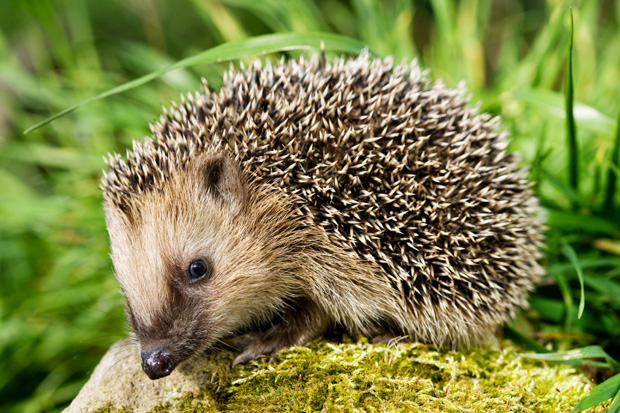Here’s a strange truth about British life: we love a hedgehog. Britain is conspicuously short of an anti-hedgehog lobby. No one runs down a hedgehog with malice. None of us can see a hedgehog crêpe without a twinge of regret. It takes an unfeasibly tough human to look at a hedgehog — even a photograph — without an unbidden softening of the heart.
So if wishes were hedgehogs, our country would be an erinacean paradise. Why, then, have we lost a third of our hedgehogs over the last decade? The British Trust for Ornithology — they’re experts on censusing and go beyond their original remit — cites estimates of 30 million hedgehogs in Britain in the 1950s. This fell to 1.5 million in the 1990s and now stands at fewer than a million.
The problem is not roadkill. Mr Toad and his poop-poop machines take a relatively small responsibility for the decline in British hedgehogs. They haven’t exactly helped, but the real reasons lie elsewhere.
Let’s not talk about blame. Conservation is not about recrimination. It’s about trying to set things right. The best of it lies in what you — you personally — can do to make this happen. We’ll get on to the solutions in a moment, so get ready to salute Solihull — the hedgehog capital of Britain, nothing less. But first the reasons for the decline of a creature universally loved.
We’re not running out of hedgehogs because we flatten them. We’re running out because we’ve taken away their livelihood, their food, their commuting routes, their foraging grounds and their residences. Not on purpose, but humans are infinitely capable of doing bad deeds by accident. To lose one hedgehog can be regarded as a misfortune: to lose 29 million looks like carelessness.
As we managed our countryside with increasing severity after the second world war, aiming to maximise production at the expense of all other considerations, so we tidied up all the scruffy bits, grubbed out miles of hedge — the animals in question are keen on such things, the clue being in the name — and generally converted the countryside into an outdoor food factory.








Comments
Join the debate for just £1 a month
Be part of the conversation with other Spectator readers by getting your first three months for £3.
UNLOCK ACCESS Just £1 a monthAlready a subscriber? Log in